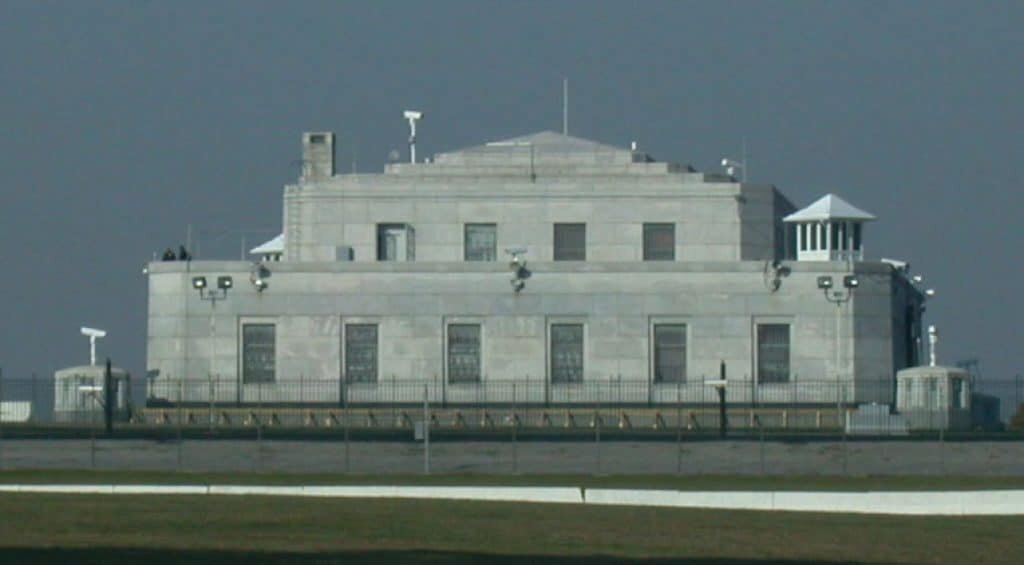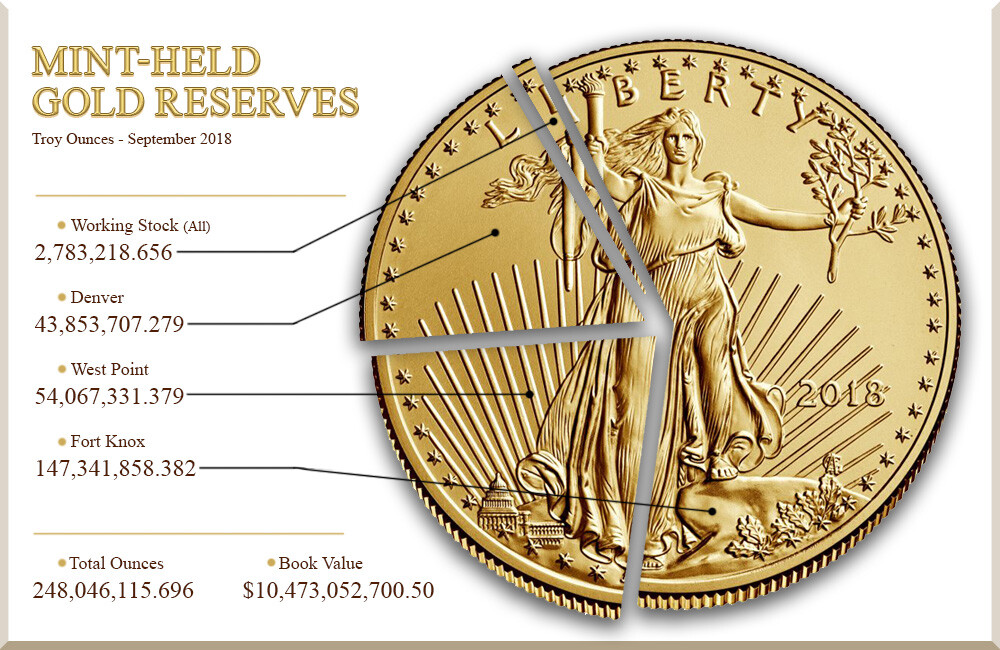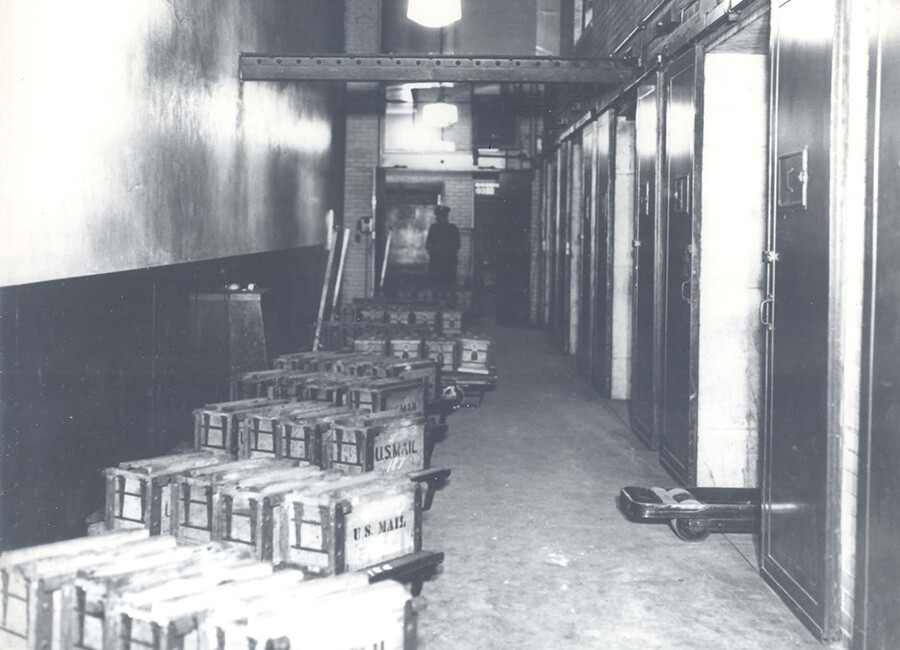From a Civil War Fort to a Gold Repository
When imagining the largest single collection of bullion, most people think of Fort Knox gold reserves.
Fort Knox, America’s only gold depository began life in the middle of the Civil War as just another fort in the conflict. This site must have been of significant strategic importance, as both Union and Confederate forces battled for control of it on numerous occasions. Once the war concluded, the U.S. Army took control of the site and, in time, renamed the site after America’s first Secretary of War Henry Knox.

The U.S. gold bullion depository. Image: By Cliff [CC BY 2.0]
United States Mint
The United States Mint provides these facts on their website:
- 147.3 million ounces of gold is stored at Fort Knox.
- At its peak, 649.6 million ounces were stored at Fort Knox on December 31, 1941.
- Small quantities of gold are removed to test the purity during regularly scheduled audits.
- The gold is held as an asset at a value of $42.22 per ounce.
- Each gold bar is 7 inches x 3 and 5/8 inches x 1 and 3/4 inches in size.
- Each gold bar weighs approximately 400 ounces or 27.5 pounds.
- No one person knows all the procedures to open the vault.
- The first gold arrived at Fort Knox in 1937.

A 2018 graphic from the U.S. Mint showing the gold reserves at Fort Knox, West Point, and Denver.
Fort Knox Gold or Empty Vaults?
To all other people outside of this small band of believers, the massive granite walls still contain the estimated $168 billion worth of bullion.
Related: Yamashita’s Gold: The Philippine Treasure Caves
The main evidence behind the belief that the vault is empty is two-fold. Firstly, only a handful of people have ever been inside the vault itself, and the gold that is believed to be there has not been audited since the mid-1970s. The bunker has been deemed to be a highly classified venue and not somewhere that the Government will simply open the doors for the general public. There are many such venues all over the country, and not just in America.

Gold destined for Fort Knox via U.S. mail.
Another cause for the suspicion is how the gold ended up in the bunker in the first place. Once construction was completed, the gold bars were shipped by U.S. mail and ferried in by an underground mine car. These nine cars were accompanied by a team of sharpshooters all armed with machine guns. The bullion also made part of the journey by an Army convoy protected by a US Cavalry Brigade.
Ever since it’s arrival, no-one has been permitted to actually see the gold in place. A US Mint spokesman once admitted via email that the accountants that audit the Mint have had a presence at Fort Knox, but did not admit how much gold is inside.
Ron Paul Bill to Audit Federal Reserve
2008 Libertarian Presidential candidate Ron Paul went on record saying that he wanted to have a look. To that end, he pushed for a bill intended to audit the Federal Reserve. Paul doesn’t believe in the conspiracy that Fort Knox is totally empty though.
[blockquote align=”none” author=”Ron Paul”]My attitude is, let’s just find out what’s there.[/blockquote]
Gold Anti-Trust Action Committee (GATA)
Paul is not alone in wanting to peer inside the vaults. A conspiracy group calling themselves Gold Anti-Trust Action Committee (GATA) also wants to see the doors to the vault opened up in public. But their desire is a more selfish and political one. This group is very much against the Federal Reserve (FR) and are uncomfortable with the FR’s increasing power. In addition to this resentment, GATA also feels that gold itself is a major factor in current interest rates.
A Declining Need From The Gold Standard
If Fort Knox really is empty, then it raises the question as to why this is so. One possible answer might surprise a few people. Gold and bullion experts consider Fort Knox’s influence or importance to be waning. The decline of the iconic building likely began in 1971 when the United States started the move away from the gold standard.
Up until this point, Americans had a much healthier belief in the currency. Whatever gold left inside the vaults is now considered an asset on a balance sheet and not part of the monetary system anymore.
It isn’t all doom and gloom for the fortress though. Even if there isn’t any gold in Fort Knox, the building may still be needed in the future as a depository because gold is still the ultimate in money. At the very least, it’s the ultimate in symbolism.
Additional Source
Sites pulled 15 May 2016